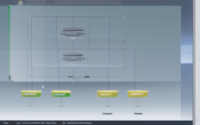3D Printing Applications in Industrial Manufacturing
3D Printing Applications in Industrial Manufacturing
Introduction to 3D Printing in Industrial Manufacturing:
3D printing, also known as additive manufacturing, has revolutionized the industrial manufacturing sector by offering innovative solutions for creating complex parts and prototypes. This technology involves layering materials such as plastic, metal, or resin to build objects based on digital designs.
Benefits of 3D Printing in Industrial Manufacturing:
3D printing offers several advantages in industrial manufacturing, including rapid prototyping, cost-effectiveness for small production runs, design freedom for intricate shapes, and customization for specific requirements. It also reduces material waste and enables on-demand manufacturing.
Applications of 3D Printing in Industrial Manufacturing:
1. Rapid Prototyping: 3D printing allows manufacturers to quickly create prototypes of new products for testing and validation, speeding up the product development cycle.
2. Customized Tooling: Industrial manufacturers can use 3D printing to produce customized tools and fixtures that enhance production processes and improve efficiency.
3. Direct Part Production: Some industries are utilizing 3D printing to manufacture end-use parts directly, eliminating the need for traditional manufacturing methods.
4. Spare Parts Production: 3D printing enables the on-demand production of spare parts, reducing lead times and inventory costs.
5. Complex Geometries: The technology can fabricate parts with intricate geometries that would be challenging or impossible to produce using traditional methods.
Materials Used in 3D Printing for Industrial Manufacturing:
There is a wide range of materials that can be used in 3D printing for industrial manufacturing, including:
1. Polymers: ABS, PLA, PETG
2. Metals: Aluminum, Titanium, Stainless Steel
3. Resins: Photopolymer, Polyurethane
4. Composites: Carbon Fiber, Fiberglass
5. Ceramics: Porcelain, Alumina
Challenges and Limitations of 3D Printing in Industrial Manufacturing:
While 3D printing offers numerous benefits, there are also challenges and limitations that need to be considered:
1. Material Strength: Some 3D printed materials may not have the same strength as traditional materials.
2. Surface Finish: Achieving a smooth surface finish can be challenging with certain printing technologies.
3. Post-Processing: Post-processing steps such as painting or finishing may be required to meet specific requirements.
4. Scalability: Scaling up production with 3D printing can be limited by build size and speed constraints.
5. Cost: Initial investment in 3D printing technology and materials can be costly for some industrial manufacturers.
Future Trends in 3D Printing for Industrial Manufacturing:
As technology continues to advance, the future of 3D printing in industrial manufacturing looks promising. Some emerging trends include:
1. Multi-Material Printing: Developing printers capable of using multiple materials in a single print job.
2. Large-Scale Printing: Scaling up 3D printing capabilities to produce larger parts and components.
3. Sustainable Materials: Utilizing eco-friendly materials for more environmentally conscious manufacturing.
4. Industry 4.0 Integration: Integrating 3D printing with other digital technologies for smart manufacturing processes.

